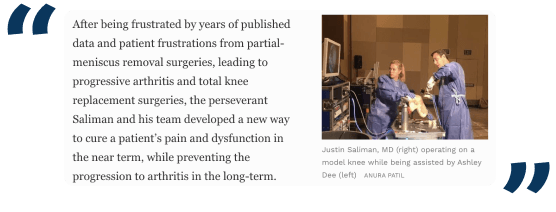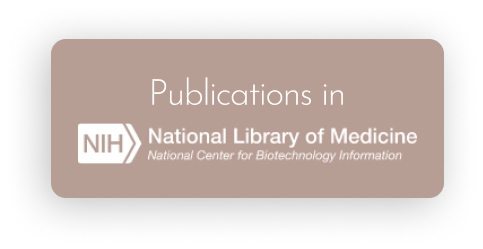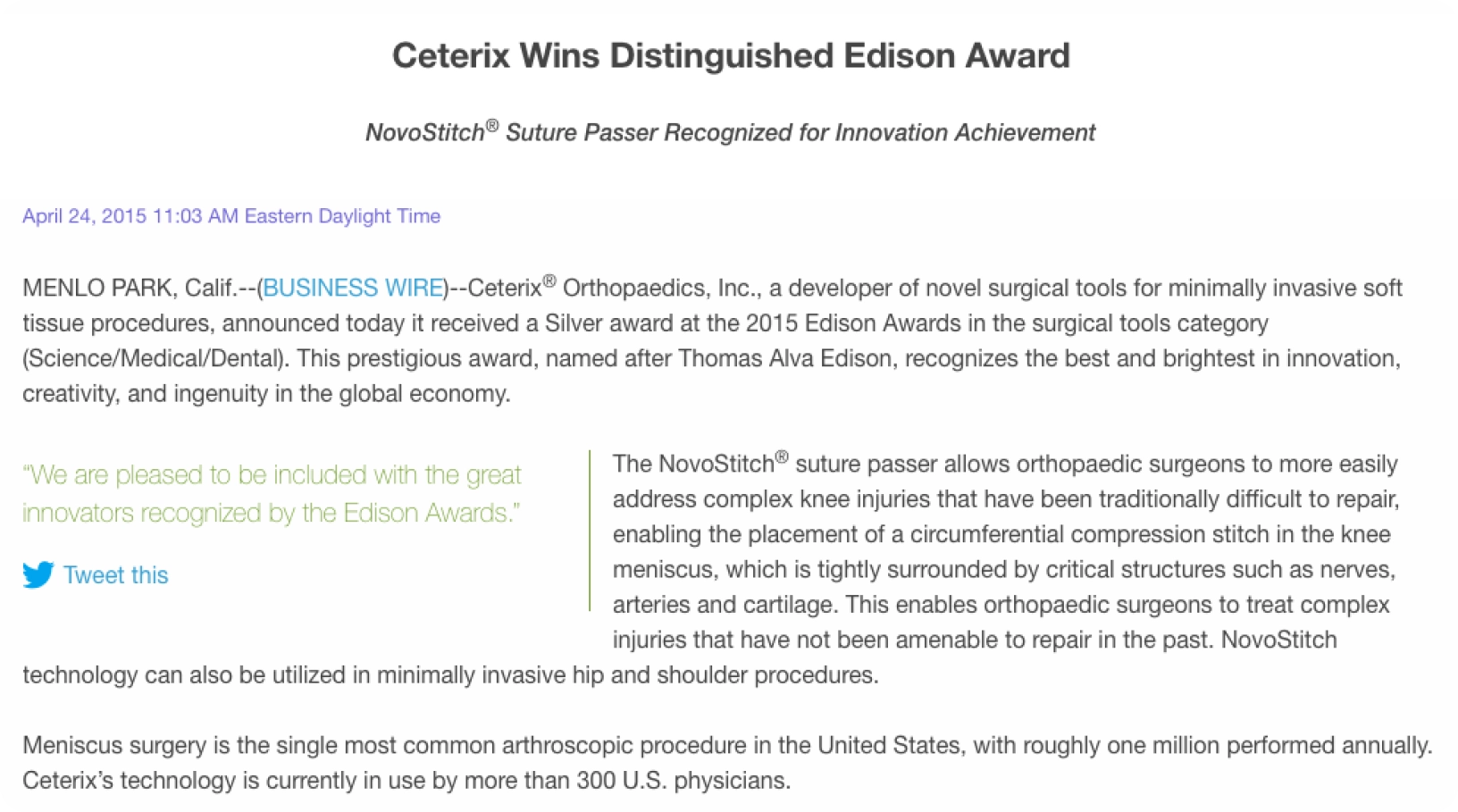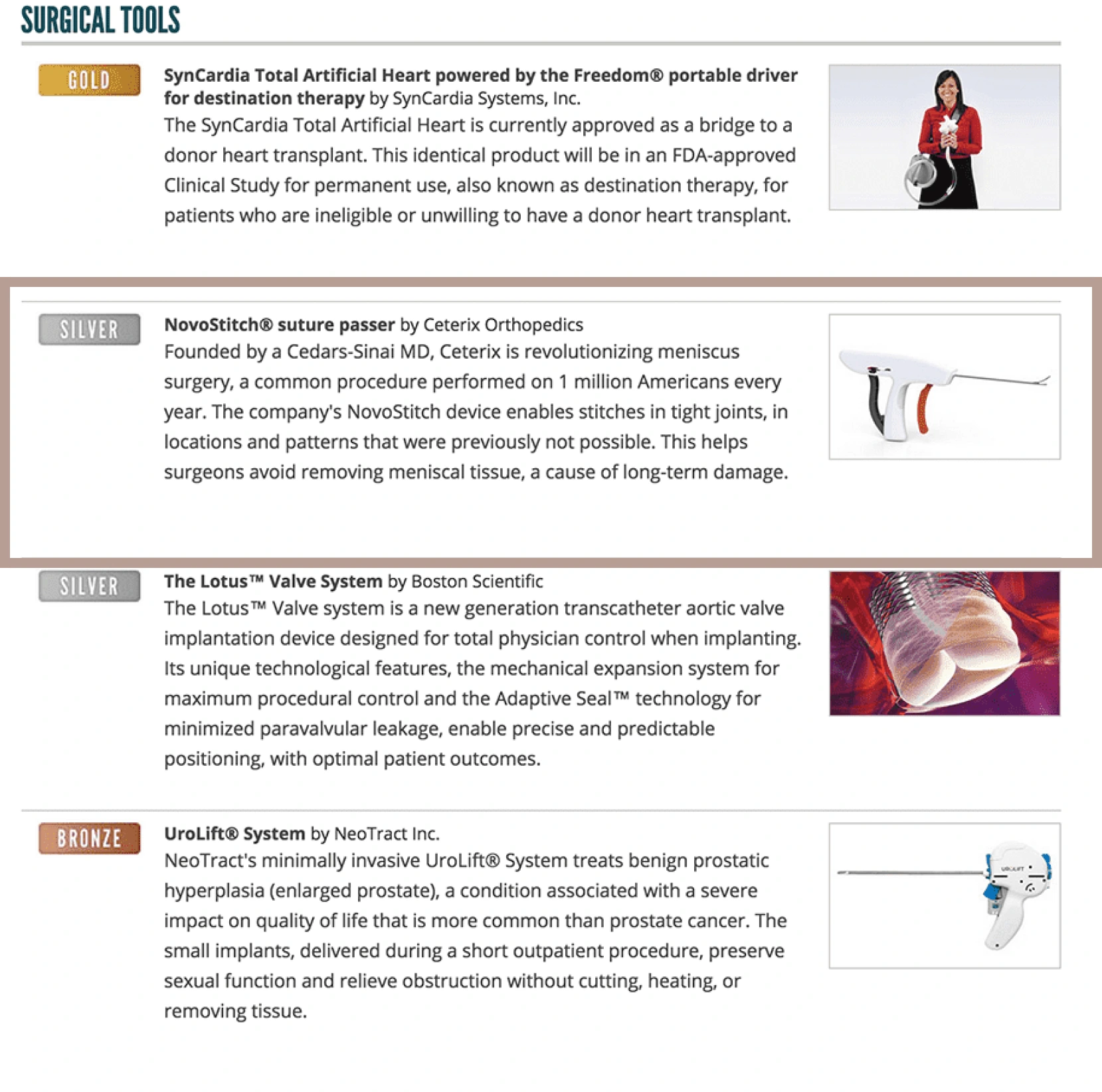Degenerative Meniscus Tear?
DON’T LET SOMEONE
REMOVE YOUR MENISCUS
NOR POORLY REPAIR IT, NOR LEAVE IT UNTREATED
Save your meniscus and prevent future arthritis with the inventor of the most advanced Meniscal Repair system
What is a Degenerative Tear?
A degenerative meniscus tear is a type of knee injury that typically occurs as a result gradual wear and tear of the meniscus, which is the cartilage that cushions and stabilizes the knee joint.

Common causes:
Aging: The most common cause, as the meniscus becomes weaker and less elastic with age.
Repetitive Stress: Activities that put constant stress on the knee, such as frequent squatting or kneeling, can contribute to degenerative changes.
Why was I told Degenerative Tears cannot heal?
These tear types are technically challenging for surgeons to sew and do not pay the surgeon well. Inadequate repair techniques lead to failure, which bias surgeons away from repair and towards removal. With proper extensive repair, all zones of the meniscus has been scientifically shown to heal regardless of blood supply.
What’s the risk of doing nothing?
Several risks may arise if a degenerative meniscus tear is left untreated:
Persistent pain and discomfort with activities:
Meniscus repair requires a doctor to spend more time with a patient during and after surgery, and they don’t get paid well for it.
Instability:
The knee may become weak and prone to giving way, leading to falls and further injuries. This instability can be particularly problematic for individuals who engage in physical activities or have jobs requiring substantial knee use.
Worsening symptoms:
An untreated tear can lead to more severe pain and further decreased mobility. This progression can make simple movements and daily tasks increasingly difficult and painful.
Arthritis:
If left untreated, the tear can accelerate the progression of arthritis in the knee joint. This often results in extensive joint damage and significant pain and stiffness in the long run.
A meniscus tear can be the beginning of the end of your knee.
What’s the risk of “cleaning the meniscus”?
Having a functional meniscus is critical to the long term health of your knee as it evenly distributes the forces in your knee joint with every step.
Removing part of the meniscus (partial meniscectomy) has been proven to increase stress on the remaining cartilage, accelerating the development of arthritis in the knee. This increased wear and tear can lead to more severe joint issues over time.
Knee arthritis is a chronic knee problem that is often so painful that it requires total knee replacement surgery. Knee replacements only last about 20 years and can have serious complications. Each revision results in loss of bone and increased risk of major complications. Total knee replacement is not a trivial surgery.
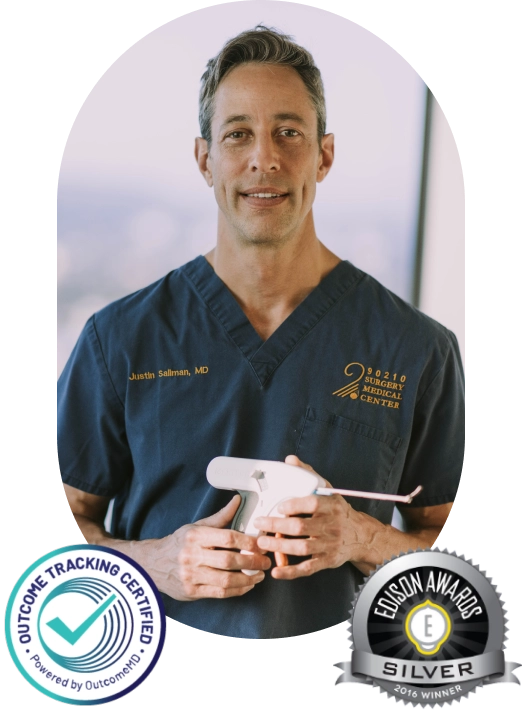
Meet the awarded surgeon and inventor of the most advanced Meniscal Repair Treatment
Dr. Justin Saliman, a seasoned knee orthopedic surgeon and entrepreneur, invented the Edison Award winning “Novo Stitch Pro Meniscal Repair System.”
This unique treatment allows him to arthroscopically sew back all meniscus tear types (including those previously considered difficult or impossible to sew) using a “Circumferential Stitching Technique.”
Minimally-invasive, Dr. Saliman’s system has proven superior to traditional meniscus repair treatments as patients heal pain and dysfunction while preventing arthritis and knee surgical replacement in the long-term.
No one has more experience repairing meniscus tears of all type!
“Non-operative treatment is better than partial meniscectomy, but repair is the best option for most degenerative tear types in patients with knees that are otherwise predominantly healthy.
Surgeons, however, must perform repairs (sewing with stitches) that are thorough enough for the meniscus to heal in every area of tearing. This is too much to ask of most surgeons, both because it is very hard to be that thorough and because meniscus repair doesn’t pay well.
The result is that patients live with their symptoms and eventually need a knee replacement.”
– Dr. Justin Saliman
The NovoStitch, an FDA approved medical device invented by Dr. Saliman, allows surgeons to arthroscopically place Circumferential Stitches around meniscus tears to provide uniform, anatomic compression of the tear edges.
This technique is the least invasive and the
most effective treatment for all tear types.
Why Circumferential Stitching Repair
is the best treatment for Degenerative meniscus tears
It takes 6 weeks for musculoskeletal tissues to heal. During this time, the meniscus
tear edges must be firmly held together as there are too many knee forces acting on the tear and constantly pulling it apart.
Dr. Saliman’s repair technique (Circumferential Stitches) allows the bottom
and top of the tear to be anatomically repaired in a way that
heals >95% of the time.
Circumferential Technique
is biomechanically stronger
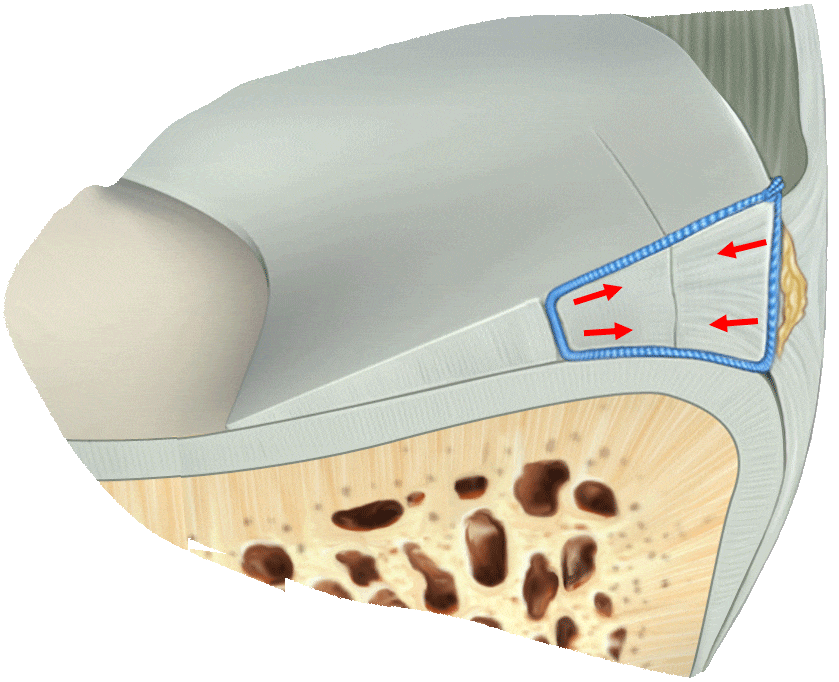
Dr. Saliman’s NovoStitch medical device allows surgeons to place circumferential sutures around meniscus tears – providing uniform, anatomic compression of the tear edges.
Old Techniques
are riskier and incomplete
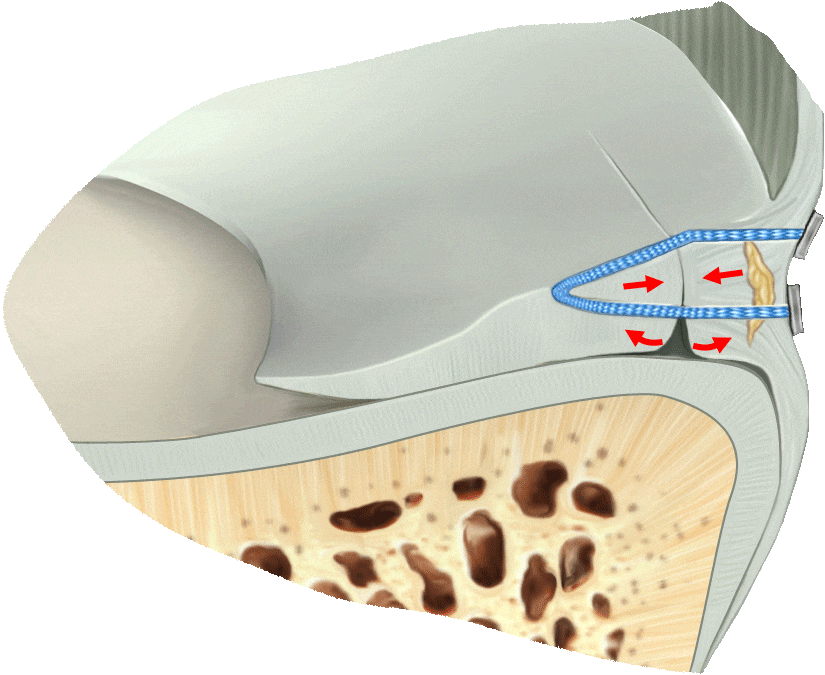
Performed mostly by hand and needles, traditional techniques only effectively sew together the top part of the tear, leading to partial healing and increased risk of meniscus re-tears.
What about blood supply?

Many studies have proven that the middle third of the meniscus (sometimes called the red-white zone) can in fact heal if properly sewn.
These zones are however much harder to repair (the repair techniques are much harder to do) because there is less tissue to work with on the central side of the tear. It has also been shown to be critical to the long-term health of the knee to have any tears that occur in the middle or peripheral third repaired (meaning sewn back together in a way that will heal).
The reason why other surgeons may have told you that your meniscus tear cannot heal is likely because they are not adequately placing stitches that compress the meniscus in all regions of tearing, and hold it together strongly during the 6 weeks it takes for the meniscus to heal.
Dr. Saliman does.
The stitching technique is key
All meniscus tear repair techniques to date are difficult if not impossible to place stitches that adequately compress the tibial side of the tear.
Anatomical reduction of the tear edges is important to prevent gap formation and to lock out the synovial fluid. The TIBIAL side (bottom) is more important to repair than the femoral side (top). Other surgeons cannot place stitches that have adequate tissue purchase to not pull through the tissue during the 6 weeks it takes to heal.
Surgeons hence repair the femoral side, which heals in that spot, but the unrepaired tibial side tear persists, hence propagates a full re-tear (typically within one year of the original repair).
Properly placed Circumferential Stiches (which requires a lot of experience) enables repair of all tear types and does so with anatomical reduction and uniform compression during healing. It also enables great purchase of the stitches on the tissue to prevent suture cut through / failure.
 +1(310)7035819
+1(310)7035819


